Science fiction has a long, well-worn history of struggling to gain critical esteem and recognition. Due to public perception of the genre as either pulpy formulaic clichés that anybody could spit out in half an hour or dense jargony drivel whose weight could kill a person in one blow, as well as a wider stigma towards so called “genre fiction” in general, sci-fi works are often disregarded unless they reach a certain standard of excellence. Their ingenuity, imagination, and humanity are often ignored or discounted, leading to an insular community of sci-fi buffs who have their own culture.
Attempts to legitimize science fiction as an art form have been around for countless decades. One academic of the ’70s, Darko Suvin, attempted to define and legitimize sci-fi as the literature of “cognitive estrangement” — works that take readers to a world unlike our own (estrangement) but still operate off certain elements with a set of rules that can be adhered to (cognition). By experiencing cognitive estrangement, Suvin stated, readers would be exposed to new ways of thinking about human culture and human society. But despite the attempts of Suvin and others, the stigma against sci-fi still exists in some form for the majority of works within the genre, the label of “true art” only given to the exceptional works that defy snobbish expectations of what the genre usually offers.
Video games, too, have faced difficulty in legitimizing themselves as a bonafide art form. We’re hardly past the time when the legendary Roger Ebert, the most esteemed movie critic of all time (rest his soul), gained mild infamy for saying video games could never be art. Despite the game industry’s dominance in regards to broader entertainment, video game stories are often seen as cheap, shallow, and secondary to the act of gameplay. While there are many personal indie games that excel at offering rich and meaningful stories through gameplay, struggling to gain acknowledgment or appreciation outside of niche communities, it’s something that many larger games — seen as entertainment first and art never — struggle with, if they even care in the first place. Nobody is playing FIFA for the plot, after all. But even so, the storytelling potential of video games is severely untapped, usually set aside in favor of making something simple and fun. Perhaps it’s fitting, then, that a work that showcases the potentialities of the medium comes from a genre that faces such similar struggles.
This lengthy preamble leads us to 13 Sentinels: Aegis Rim, a game that is as drenched in the legacy and ideas of science fiction as it could possibly be. Mecha, kaiju, time travel, aliens, terminators, amnesia, a talking cat, and multiple dimensions are all brought up — just in the game’s prologue. When the actual adventure proper opens up, the range of topics grows ever-wider over time, encompassing nearly every well-worn trope one can imagine. But don’t think for a moment that means the game is cliché, because it’s anything but — rather, it seeks to combine its multitudinous elements in a mind-bending, non-chronological, multi-protagonist story that is at once absurdly complex and stunningly whole.
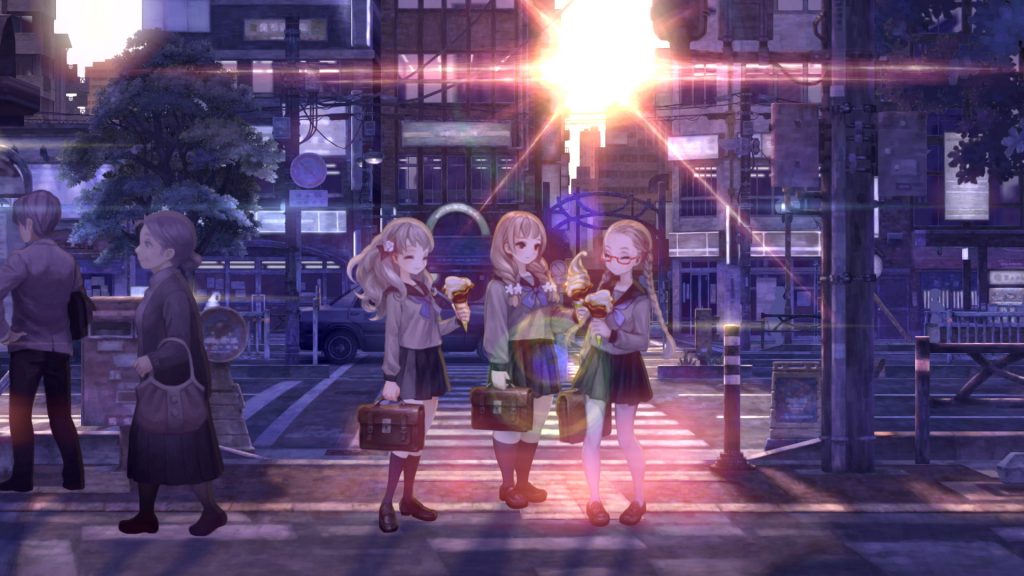
It seems impossible that the game could balance no less than 13 point-of-view characters, each of their stories told out of order, and make it all make sense. Against all odds, it does. Not only that, it carefully controls the flow of information the entire time, ensuring that you’ll hit revelation after revelation with each new chapter you uncover. Just when you think you’ve wrapped your mind around one plot point, another comes to cause a whole new turn of events. All of those above elements, along with the others the game brings in — dreams, nanomachines, chosen ones, days of future past — are all together. All cohesive. That alone is a staggering achievement.
One might wonder if 13 Sentinels is a hollow, Ready Player One-style reference factory, playing upon the audience’s recognition of cultural properties more than any actual substance. But the nods to specific science fiction properties are surprisingly few. They’ll bring up ET, the Terminator, and the War of the Worlds very occasionally, but specific references are few and far between. Instead, the game relies on the audience recognizing the elements at play — and, more importantly, the characters as well. For example, one character, Natsuno, is obsessed with invaders and UFOs, so when she finds a little mechanical scouting unit, she presumes it to be an alien rather than a robot. Characters watch tapes that appear to be memories, conflating them with sci-fi flicks they’d seen. The line between their reality and the fantastical is constantly blurred, connected only by the sinew of memetic recognition, influenced by the characters’ previous experiences. In other words, cognitive estrangement.
The game’s beautiful art style reinforces this. The environments of 13 Sentinels are of very real places — crowded city streets, polished school corridors, decrepit factory alleys — but there isn’t an ounce of “realism” among them, luridly painted with all the intense lighting and hyper-idealism of a Makoto Shinkai movie. The game’s favorite shade is a particularly striking shade of sunset orange, highlighting the subtle paint strokes of the environment and the depth of field in a way that feels more like an expressionist painting than a photograph, especially on the Switch OLED screen. Only the main characters, rendered in classic Vanillaware style, feel concrete and real. The craft of storytelling lies not merely in the writing, but in the very presentation, the game creating an active and constant question of what information to trust visually as well as textually.
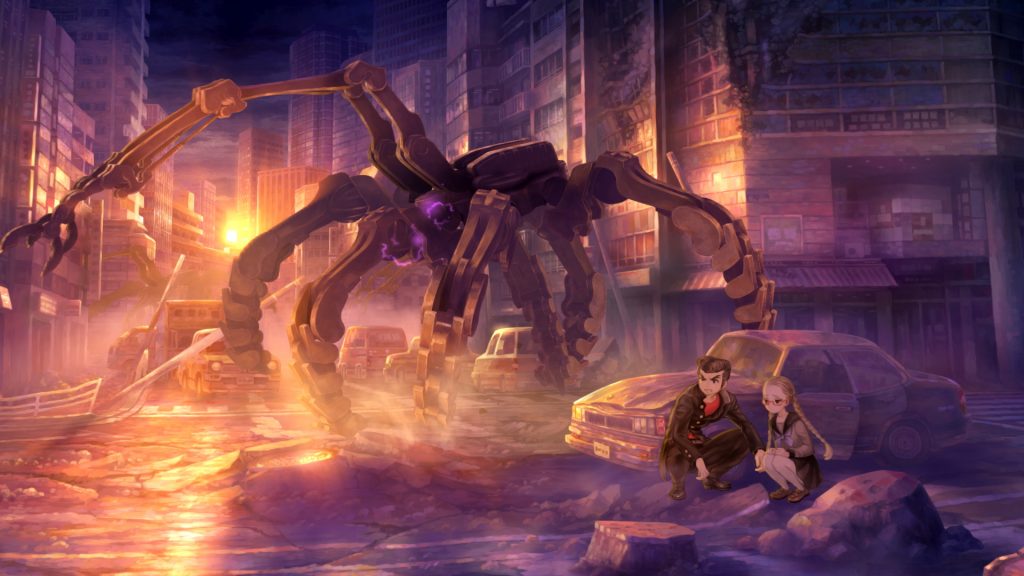
That sort of mass confusion is sure to be a detriment to some, especially on the first time through the game. Indeed, the first time I played 13 Sentinels in 2020 for the PlayStation 4 I was so focused on trying to figure out what was happening that I had little time to think about what any of it “meant.” If you struggle with excessive jargon or non-linearity in fiction, you’ll get a headache five minutes in. But as someone who relishes in wanting to figure out a puzzle, this game was perfect for me. And 13 Sentinels is no mere jigsaw, but a five-dimensional Rubik’s Cube where the pieces are split into 13 and require coding decryption before being put back together. In some ways, one might be inclined to think of it as more mystery fiction than sci-fi.
But past the central plot questions, the grand “meaning of it all” at the center of everything that can be solved, what else does 13 Sentinels have? This is perhaps where the game missteps — the characters and development they experiment are incredibly uneven, particularly on the romantic side of things. There are some here that I absolutely adore, like tough badass Yuki Takamiya and tragic amnesiac Ryoko Shinonome, and also a handful that leave me fairly perturbed. While a couple of the romantic relationships play well — Nenji and Tomi’s bickering couple dynamic is a classic — there are others that are romanticized despite being unhealthy at best and loathsome at worst. This extends to the game’s handling of LGBT topics, which ranges from “clumsily insensitive but well-meaning” to “borderline queerbaiting.” Even characters or relationships I loved tended to have at least one moment that caused me to pinch the bridge of my nose. I could go on. But as stated, the character development is really secondary to the overall (incredible) plot structure. It’d be like criticizing the pasta but not the sauce.
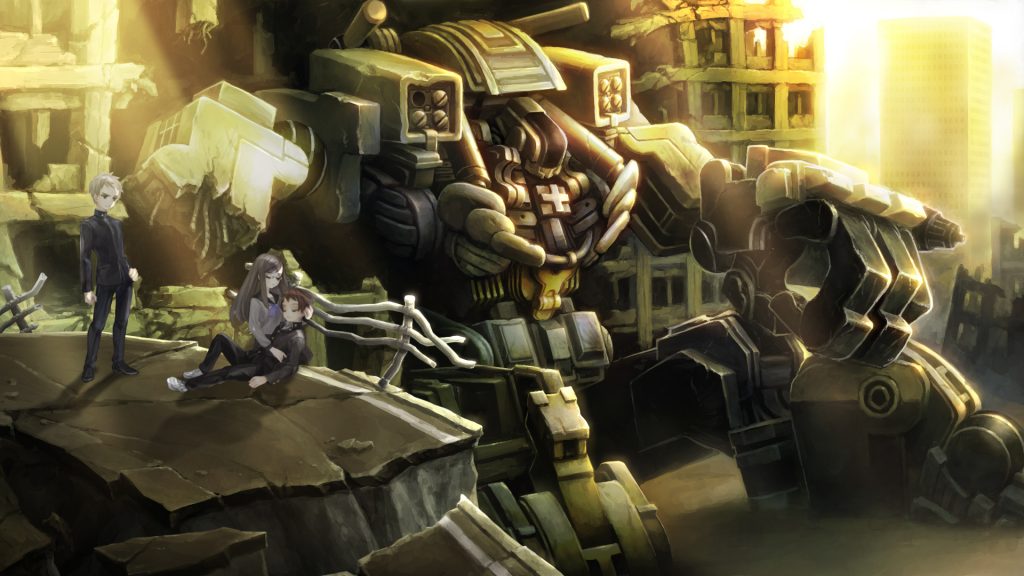
Perhaps most unusual when 13 Sentinels is compared to its contemporaries in the mind bending VN field (your Zero Escapes and Uminekos) is its lack of philosophizing. The game is constantly at a breakneck pace, giving you more and more information to possibly process, that it never really has time to navel-gaze. Despite having enough speculative scenarios to wring multiple metaphysical treatises out of, the game will barely brush upon the topics, if at all. A character will casually mention that they reconstructed their consciousness from a memory database and then move on without any interrogation of the self. It feels rather demanding to suggest that the game should have spent more time on these moments when it already does the impossible by tying all of its disparate plot elements in such an engaging way, but on my second playthrough it was a thought that occasionally crossed my mind. 13 Sentinels is often a game too complicated to be particularly deep.
If there was one other art piece I found myself comparing the game to in both playthroughs, it was Kotaro Uchikoshi’s AI: The Somnium Files — in part because that game’s sequel comes out only two months from now. In several respects, 13 Sentinels out-Uchikoshi’s Uchikoshi by somehow providing a more complex, multilayered plot than even that which he’s famous for cooking up — but it also lacks some of his works’ soul. 13 Sentinels is not completely bereft of genuinely emotional moments, but its shotgun, “see what sticks” approach is not as focused or impactful as the height of Uchikoshi’s writing. Not to pit two masterful games against one another (they’re both well worth your time), but while 13 Sentinels succeeds in its ambition, at times it can miss the forest for the trees.
This all led me to wonder: how important is 13 Sentinels, really? The scope of its plot is impressive, to be sure. But in certain ways its structure has been utilized before in other works, and even if it is a five-dimensional Rubik’s Cube, most people don’t consider Rubik’s Cube to be profoundly meaningful. 13 Sentinels may utilize the imagery of language of science fiction, but is it true science fiction, as Suvin would describe it?
Is it art?
In many ways, as a critic, it’s my job to be the arbiter of such a label, to determine that which does and does not have value. Which is why I’m going to deliver my answer as emphatically as possible:
Does it even matter?
While Suvin’s typology is useful for discussing the game and its themes (and we’re not even quite done with that yet), it’s ultimately a tool of gatekeeping, a way to determine which is true sci-fi and what is false, as if that distinction shows what does or doesn’t carry weight or import. 13 Sentinels may be no paean to the human spirit or anything, but does that mean it’s not fun? That it hasn’t left my mind since the day I played it? That I don’t experience a burning passion that makes me unable to shut up about it on the internet? The semantics of what is or isn’t art may interest others, but for my part value isn’t something that can be quantified so brazenly. 13 Sentinels is a game I love, whatever warts it may have.
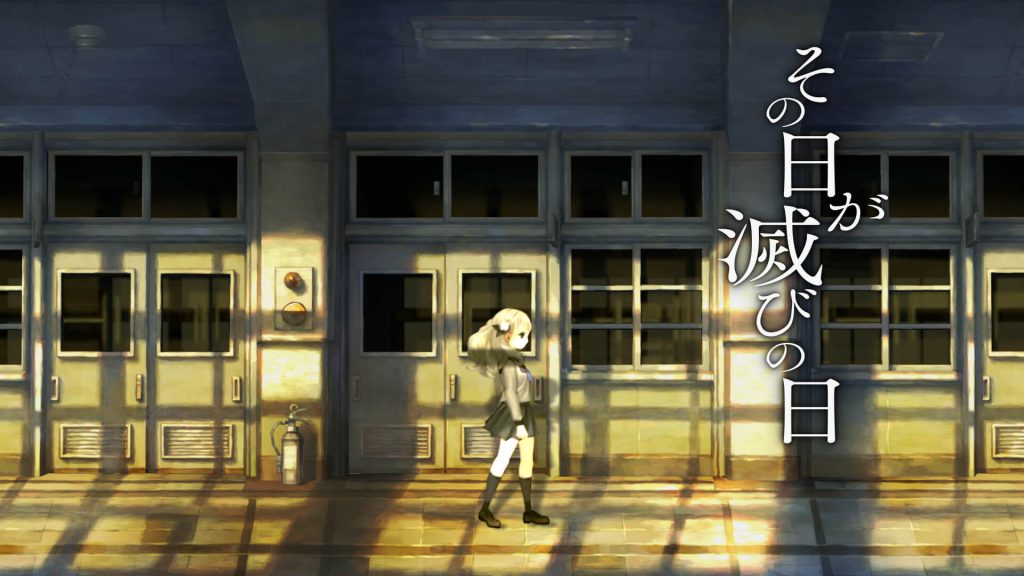
I am now going to discuss (and thereby spoil) the ending of 13 Sentinels: Aegis Rim. I highly recommend not reading beyond this point unless you have played the game to completion. It’s an engrossing experience that I recommend to anybody who’s read this far, and I would hate to see my ramblings damper the fun.
At the very end of 13 Sentinels, it is revealed that the world the characters have been fighting to protect is a virtual reality they grew up in for the first quarter of their lives, one intended to enculture them in the ways of humanity so that they can rebuild civilization on a distant planet. Their war against the kaiju ensued because the programmer of the simulation reworked code from an old sim game that erroneously seeped into the wider system. The entire process was effectively an act of social reproduction, teaching the youth the history of Earth and enriching their lives so that they can establish a new life. In effect, the entirety of 13 Sentinels plot is a literal act of cognitive estrangement, putting the protagonists into a space that is like and unlike the world they inhabit so they can reflect upon it and build a new reality.
Am I reading too deeply into it? Probably. At times, this was just a game that was clearly trying to justify all its disparate elements by combining them into one smorgasbord of plot. But if there is one thematic through-line that ties it all together, it’s these cultural artifacts — the giant robots and world-destroying monsters, time-looping criminals trapped inside androids masquerading as girls, eras of Japan with their own cultural identities — that shape the future. It’s no curiosity that the game primarily takes place during the “1980s” rather than the more proximal “2020s,” the last era before the information age, a time when the realm of science-fiction was barely becoming a mainstream phenomenon among its biggest franchises, one that we can look back upon rather than forward to.
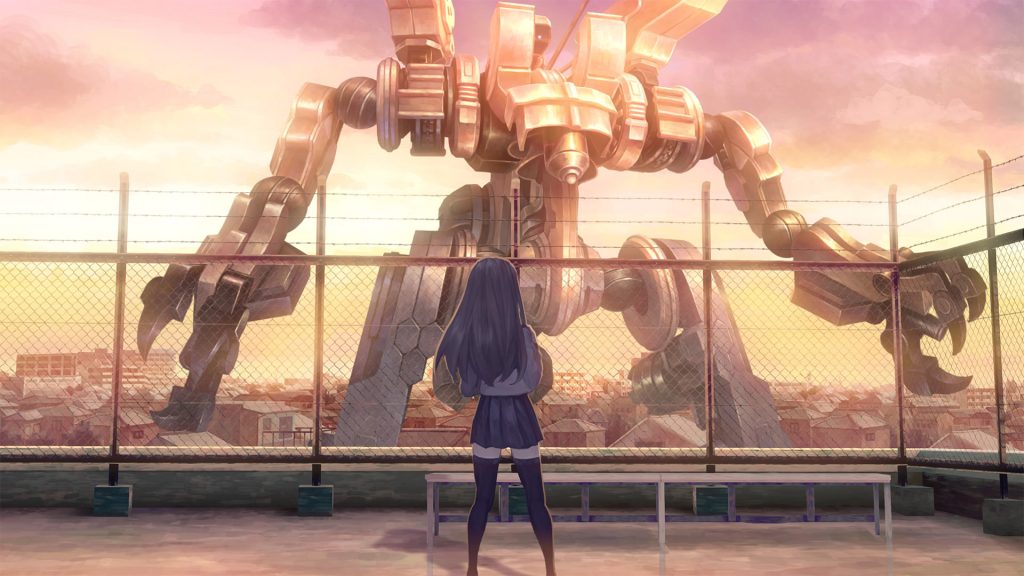
13 Sentinels: Aegis Rim is big. It’s messy. It’s a masterpiece. It’s confounding one second and elucidating the next. It’s not something you turn your brain off to kick back and enjoy, but one you send your brain into overload to comprehend. The characters can be painfully human one moment and starkly fictional the next. It offers deep catharsis for some plot points and barely any for others. The second time through was somehow just as revelatory as the first. I haven’t been able to stop thinking about it since the day I started playing it, and I doubt I’ll stop anytime soon. And yet despite its brilliance, it can’t help but be flawed.
Then again, art always is.
Leave a Comment


